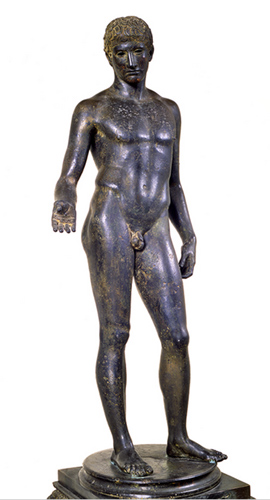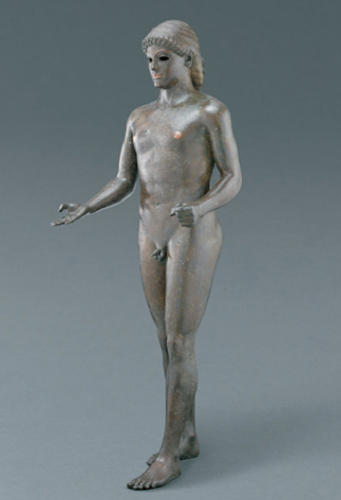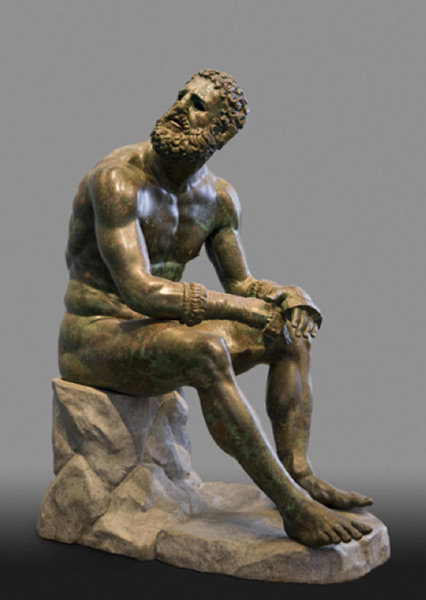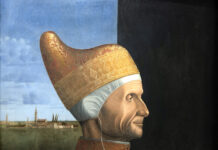Although Greek sculptors worked extensively in marble, many preferred working in bronze because the medium allowed greater exploration of complex poses, anatomy, and movement in the body. Today, bronze originals are difficult to find, let alone to serve as the center of an exceptional exhibition.
Ever since the 4th century BCE, Western cultures have sought to imitate Classical Greece in both life and art, especially sculpture. Alexander the Great and his father, Philip II of Macedonia, were both lovers of Greek culture and built a Hellenistic empire that was Grecian at its foundation. However, the Hellenistic period (323-31 BCE) was characterized by intense urbanization in the Mediterranean world. Hellenistic artists — while copying Greek styles and techniques — were also more keen to explore less idealized, and sometimes controversial, subjects.

“Youth,” ca. 30 BCE, bronze/copper/lead, Museo Archeologico Nazionale, Firenze
The J. Paul Getty Museum has brought together an extraordinary collection of bronze sculpture from the Hellenistic world, which is now on view. A particularly well-known example is “The Seated Boxer,” circa 300-200 BCE. The sculpture is unequivocally masterful in its anatomical precision, but be that as it may, scholars are quick to discuss the sculpture’s exploration of the human psyche, seen in the pained and exhausted expression on the sitter’s face. The psychological realism and intensity to the sculpture characterize well the Hellenistic preference. The furrowed brow, hunched posture, and grimace are mesmerizing.

“The Piombino Apollo,” ca. 120-100 BCE, bronze/copper/silver, 46 x 15 x 13 in. Musee du Louvre
Also deserving of mention is a bronze “Youth” from around 30 BCE. The sculpture is based on a similar sculpture that, to this day, remains one of the most famous in history: Polykleitos’s “Doryphoros” from 440 BCE. Although aspects of the “Youth” sculpture have been changed from its inspiration, the sculpture retains the canonical contrapposto stance, idealized musculature, and stylized hair.
“Power and Pathos: Bronze Sculpture of the Hellenistic World” opened on July 28 and will be on view through November 1.
To learn more, visit the J. Paul Getty Museum.
This article was featured in Fine Art Today, a weekly e-newsletter from Fine Art Connoisseur magazine. To start receiving Fine Art Today for free, click here.








